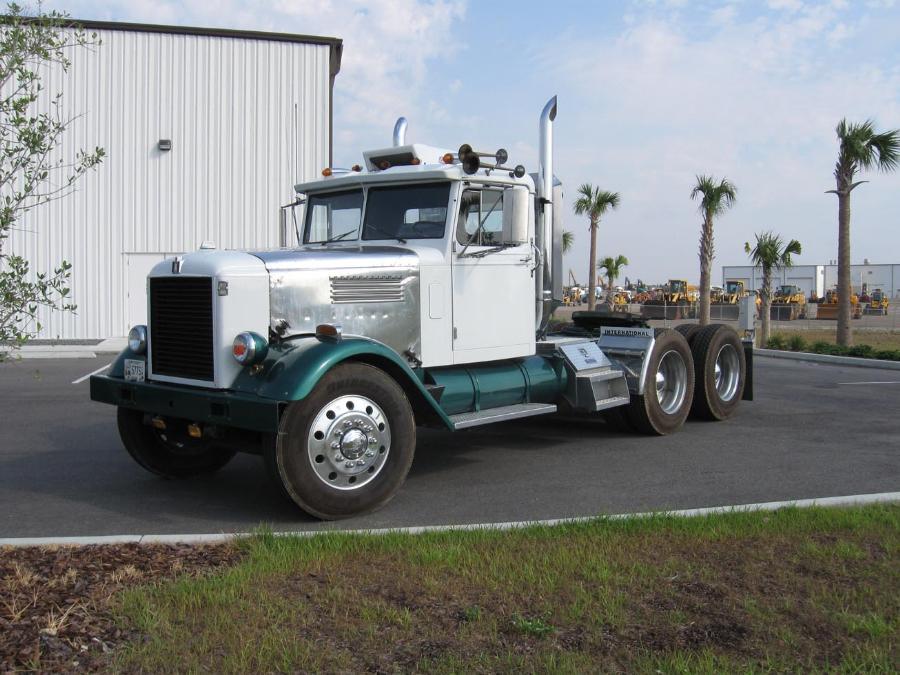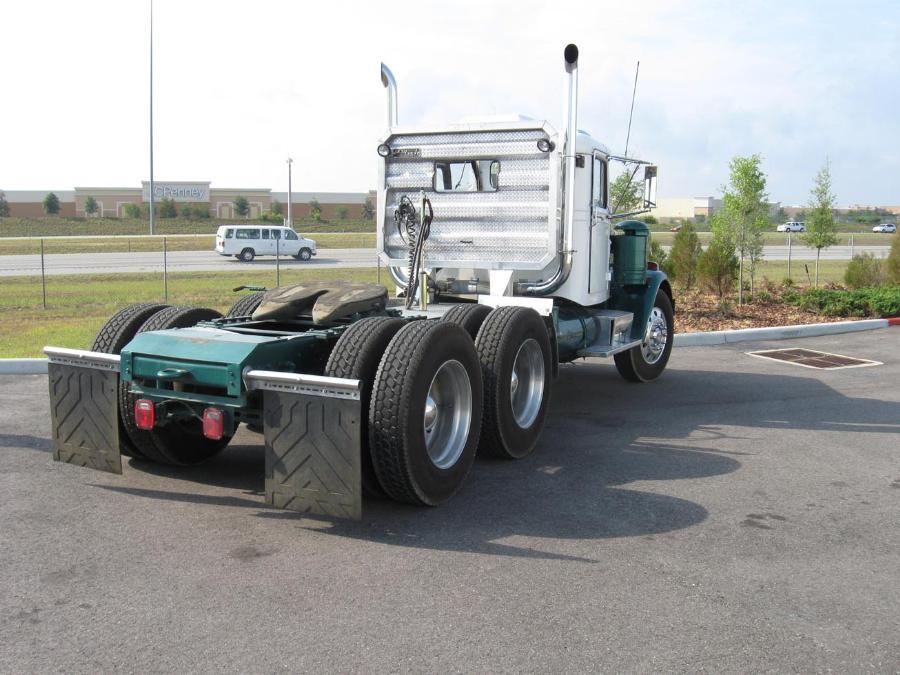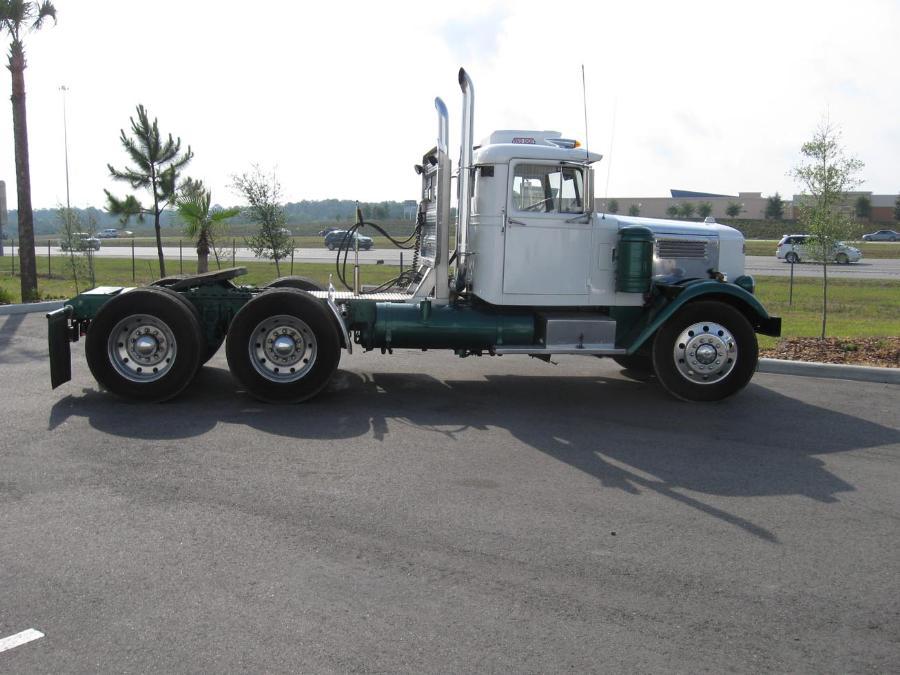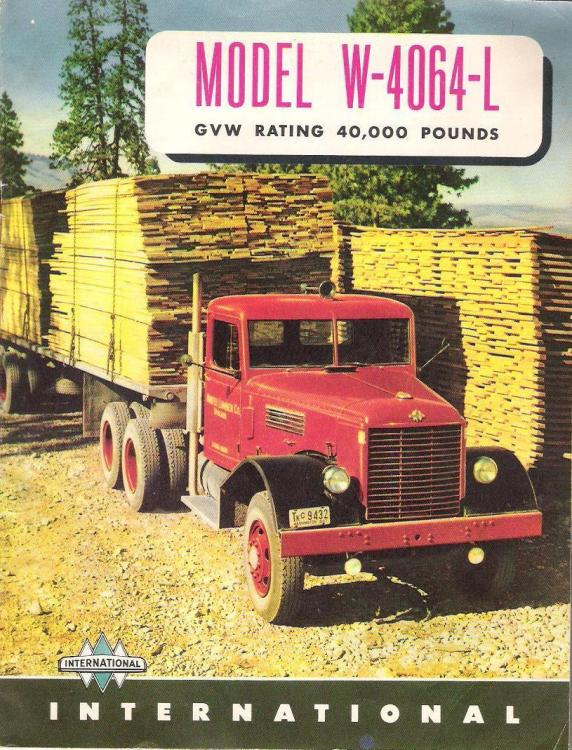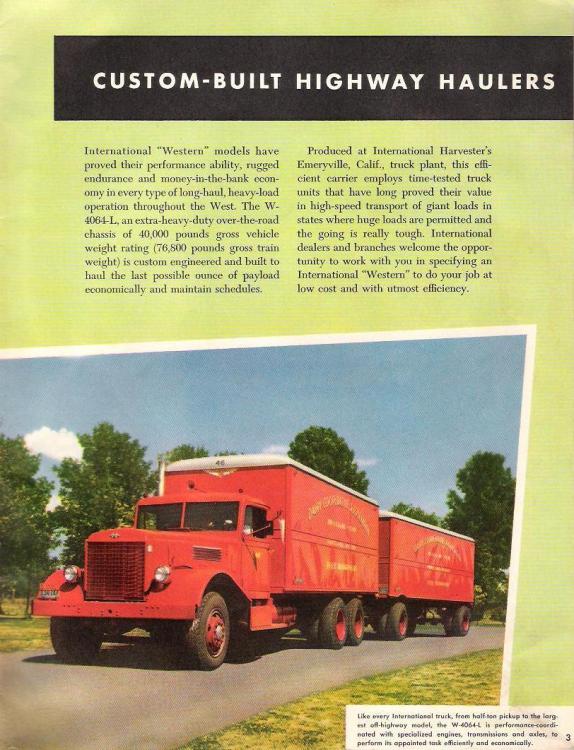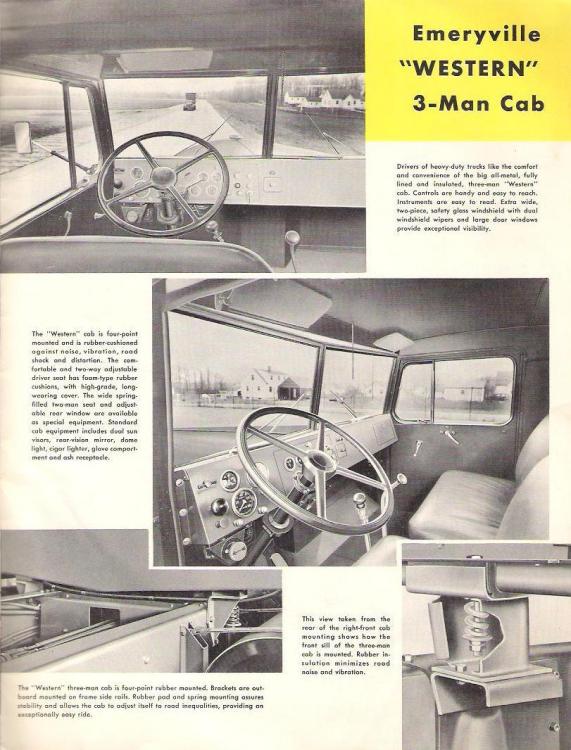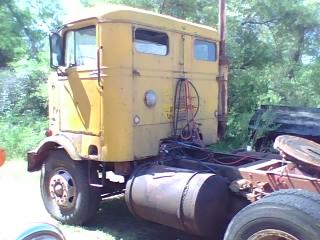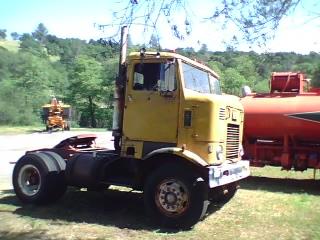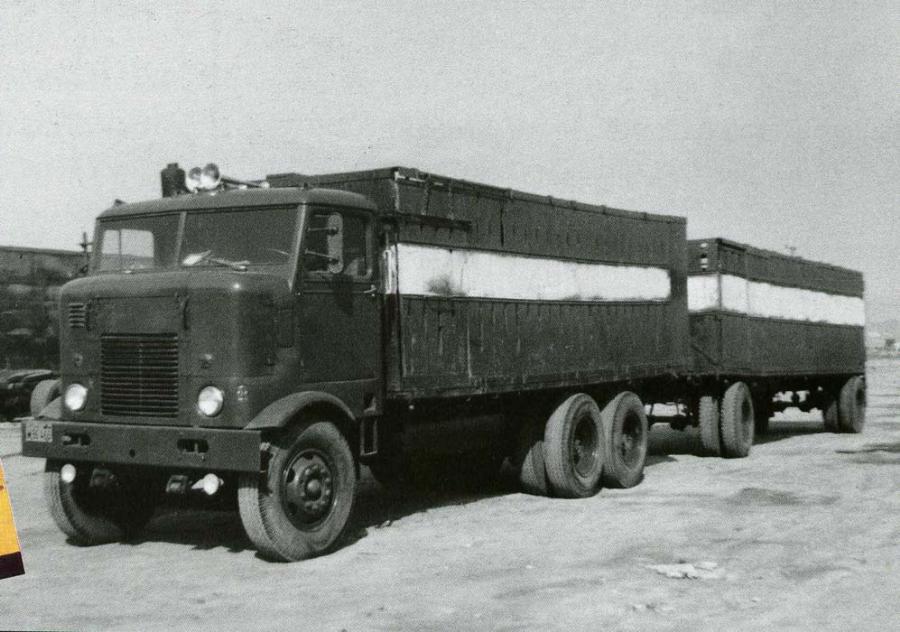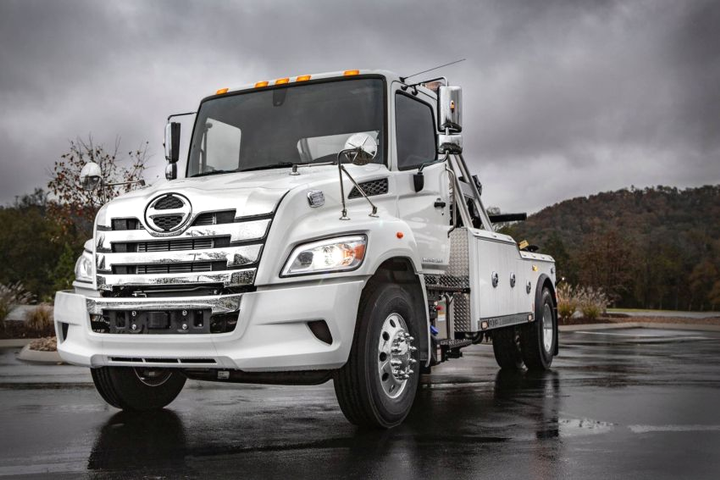
kscarbel2
Moderator-
Posts
18,550 -
Joined
-
Days Won
112
Content Type
Profiles
Forums
Gallery
Events
Blogs
BMT Wiki
Collections
Store
Everything posted by kscarbel2
-
Reuters / November 27, 2018 White House economic adviser Larry Kudlow on Tuesday indicated President Donald Trump may announce specific ramifications for General Motors's plans to cut thousands of jobs and potentially close some of its North America plants. "I'm going to leave that to him," Kudlow said when asked if Trump has consequences in mind for the major auto maker. "You may find additional announcements coming on that topic." ------------------------------------------------------------------------------------------------------------------------ “Very disappointed with General Motors and their CEO, Mary Barra, for closing plants in Ohio, Michigan and Maryland,” said Trump. “Nothing being closed in Mexico & China. The U.S. saved General Motors, and this is the THANKS we get!” .
-
The Kenworth with an ISX12 and Allison transmission is popular for very good reasons.
-
Great points.
-
It's been reported that GM is in crisis mode over their new 2019 pickup. With the new 2019 Dodge (Ram) pickup now having the best interior in the segment, Chevrolet has been pushed to third place. Those who answer to Mary Barra about that are sweating. Ford has the highest sales. However, once the new heavy duty Dodge range enters the picture for 2020, I think we'll all be able to say that Dodge has the best line-up. It will be interesting to see if Dodge's heavy duty range gets a tilt hood, or hear that they changed their 2020 product late in the design process, adding a tilt hood after the Silverado/CV debut.
-
-
W Series "Westcoaster" with EW cab (1946-1949). http://www.hankstruckpictures.com/pix/trucks/t_brad_dunkin/2008/04-24/file0008.jpg .
-
GM Takes Painful Measures to Avoid Another Near-Death Experience David Welch & John Lippert, Bloomberg / November 27, 2018 What’s good for America hasn’t been so good for General Motors. With gasoline prices falling and new electric cars beckoning, consumers are abandoning the conventional sedans that have defined the U.S. auto industry since the days of Henry Ford. Scarred by a financial crisis a decade ago, GM is moving unusually fast this time to reckon with the new reality, and Wall Street is applauding the move. News Monday that GM would cut more than 14,000 jobs and, like Ford, pull back from conventional sedans thrilled investors, sending the shares up 4.8 percent and lifting other automaker stocks. The largest U.S. automaker is cutting seven plants and eliminating unpopular sedan models during a time when auto sales remain brisk, a sign that Chief Executive Officer Mary Barra is making changes now before an economic downturn forces her hand. “In the past, GM management didn’t react as quickly -- they went through a sort of slow-speed crash that culminated in 2009 bankruptcy, and that’s a lesson that was hard-learned,” said Maryann Keller, an independent auto analyst in Stamford , Connecticut , who’s written several books about the company. “This is a cyclical, highly competitive, slow-growing business. You can’t continue producing unprofitable vehicles, especially when you’re making crazy investments in mobility service business with no potential for profit in the foreseeable future.” Barra, a GM lifer, is dealing with two challenges. The first is of the present: American consumers are snubbing sedans like never before. The second concerns the future: Doubts abound that GM and other century-old industrial giants will be able to cope with the rise of electric cars and self-driving technology, especially with the likes of Tesla and tech giants such as Google’s Waymo perceived to be on the forefront. GM’s broad restructuring, just weeks removed from reporting surprisingly strong profit, is a move reminiscent of what Ford did in 2006, two years before a worldwide credit crunch sent GM and Chrysler into Chapter 11. While the U.S. auto market is past its peak reached in 2016, automakers are still on track to sell more than 17 million vehicles for a fourth consecutive year. The longest such run in the past was a two-year stretch that ended in 2001. In the six years that followed, sales stayed steady above 16 million, and Ford restructured toward the end of that stretch. SUV Shift This time around, wrenching change in buyer behavior could cost GM car plants in Michigan, Ohio and Ontario their future. Sedans have gone from more than half of U.S. sales as recently as 2012 to just about 30 percent of the market this year. Sport utility vehicles and pickup trucks are more dominant than ever in showrooms, spurring GM to join Ford and Fiat Chrysler Automobiles NV to kill off many of the passenger cars in its lineup. On top of this, Barra is plowing money into GM Cruise LLC -- the unit developing the automaker’s self-driving technology -- and is developing 20 fully electric cars to sell globally starting in 2023. Both of those pursuits are going to require tens of billions of dollars in spending over the next decade to keep up with rivals including Volkswagen AG. “This industry is changing very rapidly,” Barra told reporters Monday in Detroit. “We want to make sure we’re well-positioned. We think it’s appropriate to do it while company is strong and the economy is strong.” Political Blowback Barra, 56, is convinced enough of the need for GM to slim down that she was willing to risk immediate political backlash from U.S. President Donald Trump and Canadian Prime Minister Justin Trudeau. Trump told reporters he spoke to Barra and reminded her “this country has done a lot for General Motors.” He said there’s a “lot of pressure on them” and that he’s pushing for GM to bring new products to Ohio, whose Lordstown plant is one of five scheduled to close in North America. During the financial crisis a decade ago, the U.S. Treasury Department kept GM alive by investing $49.5 billion in both equity and debt, giving the automaker the only financing available to get through bankruptcy. After GM went public and paid off the debt portion of the investment, taxpayers lost more than $10 billion in total. GM emerged from bankruptcy in 2009. Four factories in the U.S. and one in Canada could be shuttered by the end of 2019 if the automaker and its unions don’t come up with an agreement to allocate more work to those facilities. Another two will close outside North America. The Detroit-based company’s shares surged on the plan. “GM has to make sure that the crisis doesn’t happen again,” said Ron Harbour, senior partner with consulting firm Oliver Wyman. “They want to make sure they are out front.” Job, Sedan Cuts The plan to lop 15 percent of salaried workers follows a round of buyouts that GM offered to longer-tenured workforce at the end of October. GM said the cuts will boost automotive free cash flow by $6 billion by the end of 2020. The company flagged one-time charges of up to $3.8 billion for the fourth quarter of this year and first quarter of 2019. GM plans to jettison the Buick LaCrosse, Chevrolet Impala and Cadillac CT6 sedans next year. The Chevy Volt plug-in hybrid will also be dropped along with the Chevy Cruze compact, which will be made in Mexico for other markets. Too many of GM’s factories are operating on a single shift to build models that have fallen out of favor, leading its plants to run about 1 million vehicles short of their full capacity, said Kristin Dziczek, vice president of industry, labor and economics for the Center for Automotive Research in Ann Arbor, Michigan. “Most of the one-shift plants are sedan plants,” Dziczek said. “That’s a real mismatch in a market where 40 percent of the vehicles sold are crossover utilities.”
-
Caterpillar Introduces Two New Ultra-Class Trucks
kscarbel2 replied to kscarbel2's topic in Trucking News
797 assembly -
Caterpillar Introduces Two New Ultra-Class Trucks
kscarbel2 replied to kscarbel2's topic in Trucking News
-
Matt Cole, Commercial Carrier Journal (CCJ) / November 19, 2018 Volvo Group has recently issued three recalls affecting more than 3,000 trucks for issues with snow plow lamp preparation kits in certain vocational trucks, as well as a potential steering issue, according to National Highway Traffic Safety Administration (NHTSA) documents. The largest of the three recalls affects approximately 2,194 model year 2004-2019 Volvo VHD vocational trucks equipped with snow plow lamp preparation kits. Mack issued the same recall on approximately 946 model year 2019 Granite trucks. In these trucks, the snow plow headlights can be turned on without other exterior lights, and the high beam indicator won’t work when the snow plow high beams are on. In these cases, the driver could operate the vehicle with the snow plow headlights on but the marker and tail lamps off, which is a violation of federal vehicle safety regulations. Volvo and Mack will notify affected truck owners, and dealers will update the software related to the plow lights for free. Owners can contact Volvo customer service at 1-800-528-6586 with recall number RVXX1804. NHTSA’s recall number is 18V-766. Affected Mack owners can contact Mack customer service at 1-800-866-1177 with recall number SC0414. NHTSA’s recall number is 18V-765. Mack has also issued a recall on approximately 169 model year 2019 Anthem, Granite and Pinnacle model trucks in which the pinch bolt on the upper steering shaft may not be properly tightened. This could result in the steering shaft to separate and cause a loss of steering. Mack will notify affected owners, and dealers will inspect the vehicles for any loose pinch bolts, correcting if necessary. Owners can contact Mack customer service at 1-800-866-1177 with recall number SC0413. NHTSA’s recall number is 18V-778.
-
Hino Enters Heavy Duty Market with XL Series Truck
kscarbel2 replied to kscarbel2's topic in Trucking News
I like Hino, but that is a clumsy looking truck. The cab and hood don't match.....they're not proportional. Looks like a 48-hour project. Horrible execution. -
Hino Enters Heavy Duty Market with XL Series Truck
kscarbel2 replied to kscarbel2's topic in Trucking News
Hino Shows Off XL Series Towing & Recovery Trucks Heavy Duty Truckiing (HDT) / November 26, 2018 Hino Trucks expanded its product lineup this past Spring with the introduction of the all-new Class 7 and Class 8 XL Series. Recently featured at the 2018 American Towman show in Baltimore, the trucks featured a fully equipped Miller Industries Century 3212 G2 medium-duty wrecker and an LCG16 Series carrier. The Hino XL7 and XL8 models are powered by Hino’s A09 turbo diesel 8.9L inline 6-cylinder engine boasting a B10 life of 1,000,000 miles. Production of the new Hino XL7 and XL8 trucks will start in early 2019 and will be assembled in Mineral Wells, W. Va., at Hino’s new one million square foot state-of-the-art production facility. Hino XL Series has been coupled with the Century 3212 G2 designed with the capability of towing a wide range of vehicles, incuding passenger cars, vans, city tractors, and motor homes. With multi-positional rear jacks, dual 15,000-pound planetary winches and a 16-ton recovery boom, the Century 3212 G2 was designed to handle a wide variety of recovery jobs. Also on display at the AT Show is the Hino XL Series with a Miller Industries 16-Series LCG (Low Center of Gravity) carrier. The patented design lowers the deck height 5 to 6 inches over conventional carriers. The lower height allows for the transport of taller loads such as forklifts or man-lifts that maybe over-height on a conventional carrier as well as providing better stability during transport. The Hino XL Series will be offered in a host of straight truck and tractor configurations ranging from a GVWR of 33,000 to 60,000 pounds and GCWR up to 66,000 pounds with max performance of 360 horsepower and 1,150 lb.-ft. torque. . -
Grocery Giant Plans to Buy 10 Tesla Electric Tractors Heavy Duty Truckiing (HDT) / November 26, 2018 Food and drug retailer Albertsons has announced plans to purchase 10 Tesla all-electric Semi tractors for its Southern California stores. The electric trucks will be added to its fleets under the Albertsons, Vons, and Pavilions names. Albertsons said the Semi models will be able to travel 300 to 500 miles on a single charge fully loaded, and use less than 2 kilowatt hours of energy per mile. This suggests that the company may be buying both the base model Semi. which Tesla said\ will have a range of 300 miles, and the more expensive extended range model with a 500-mile range. The base model lists for $150,000 and the extended range model for $180,000. “Advancing supply chain efficiency and sustainability is an important goal for our company,” said Tom Nartker, vice president of transportation at Albertsons. “We’re excited to pilot this expansion of our transportation program with trucks that help us limit our overall carbon footprint.” The Tesla Semi purchase is part of Albertsons’ commitment to running a safe, sustainable fleet at its 2,300 stores across the country. The company is a partner and supporter of the Environmental Protection Agency’s SmartWay program and its fleet of more than 1,400 trucks is SmartWay certified. The company also said that 92% of its trucks operated by third-party carriers are SmartWay certified.
-
Trump tells GM to put 'something else' in Ohio Reuters, Bloomberg & Automotive News / November 26, 2018 WASHINGTON -- U.S. President Donald Trump told The Wall Street Journal on Monday that General Motors should stop making cars in China and make them in the United States instead. GM said on Monday it would cut thousands from its North American workforce, slash production and eliminate some slow-selling car models. Trump told reporters he was not happy with GM's decision to idle the Chevy Cruze assembly plant in Lordstown, Ohio, and that GM had "better put something else" in Ohio. “You better get back in there soon -- that’s Ohio,” Trump told reporters Monday, recounting what he said to GM CEO Mary Barra following the job cuts announcement earlier Monday. The automaker said it planned to lay off 14,000 workers and close seven factories. “I was very tough. I spoke with her,” Trump said as he departed the White House for campaign rallies in Mississippi. “We have a lot of pressure on them.” Ohio is a crucial swing state politically and played a key role in Trump's 2016 victory. He will need to keep his support strong in Ohio for the 2020 election. Barra reportedly told Trump the decision to halt sales of the Chevrolet Cruze had "nothing to do with tariffs" but was because of poor sales. "Get a car that is selling well and put it back in," Trump said. Barra also was expected to meet with Trump's economic adviser Larry Kudlow at the White House on Monday, according to CNBC.
-
GM plans to discontinue the Chevrolet Impala, Cadillac XTS and CT6 (continued in China), and Buick LaCrosse. Surprisingly, GM will also discontinue the widely acclaimed Chevrolet Volt hybrid, and impressive Cruze compact sedan, rather than evolve these two models forward.
-
'It makes no sense' to shutter GM Oshawa, Unifor says Automotive News / November 26, 2018 Unifor’s auto director says “it makes no sense” for General Motors to close its Oshawa Assembly Plant, northeast of Toronto. The automaker has informed the union, which represents about 2,500 workers the plant, that there will be no product allocation to Oshawa plant after 2019. “We will work to determine what this really means,” Unifor’s Dino Chiodo told Automotive News Canada. The plant currently builds the 2019 outgoing models of the light- and heavy-duty GMC Sierra and Chevrolet Silverado on a consolidated line while building the Cadillac XTS and Chevy Impala on a flex line. The union will have the opportunity to sit down with GM executives Monday and possibly Tuesday, too, Chiodo said. GM is scheduled to make a significant announcement today regarding its global operations. It is expected to include the future of the Oshawa plant. The Globe and Mail late Sunday reported that GM has told top government officials in Ontario and Canada that the plant will be closed. Chiodo believes the plant deserves to stay open because of its production performance over the years. “The Oshawa plant is the most efficient, has had one of the best vehicle launches, has set benchmarks and standards on how to do it the right way,” Chiodo said. “It’s fully flexible, one of the few that can build both cars and trucks. It makes no sense to me that they would shut it down.”
-
Canada blindsided by GM Oshawa closure, workers walk out in protest Allison Martell & Allison Lampert, Reuters / November 26, 2018 Hundreds of workers walked off the job and Canadian Prime Minister Justin Trudeau expressed “deep disappointment” after General Motors Co on Monday announced the closure of its Oshawa plant, catching governments and employees by surprise. Canadian officials, briefed on the plan on Sunday, promised to aid those affected by the December 2019 closure, part of a wider restructuring plan that will cut production of slow-selling models and slash its North American workforce. GM said the closure affects 2,973 assembly line jobs in the Ontario city, out of a Canadian workforce of 8,150. “I spoke with GM (Chief Executive) Mary Barra to express my deep disappointment in the closure,” Trudeau tweeted on Monday. “We’ll do everything we can to help the families affected by this news get back on their feet.” GM told the provincial government nothing could be done to keep the plant about 37 miles (60 km) east of Toronto open, Ontario Premier Doug Ford said. “The first thing I said is, ‘What can we do? What do we have to do?’” said Ford, referring to a Sunday call with GM Canada’s President Travis Hester. “He said the ship has already left the dock.” Ford later added: “We’re disappointed in GM. We supported GM years ago when they were in trouble.” The Canadian and Ontario governments joined the United States in supporting GM with billions of dollars in aid after the automaker filed for bankruptcy protection during the 2009 global economic downturn. The closure dealt a blow to an industry which has struggled to attract new investment in recent years. However, the new trade agreement struck by the United States, Mexico and Canada in September leaves significant room for Canadian plants to grow exports duty-free. USMCA, as the new NAFTA is called, is expected to be formally signed this week. Canadian Innovation Minister Navdeep Bains said that GM “only made this official announcement to us yesterday.” A former Canadian auto executive said it would be difficult for Canadian government officials to entice GM to keep the plant open. “The government has done everything they could to keep them afloat. Obviously incentives by themselves don’t keep a car plant open,” said the executive, speaking on condition of anonymity because of the sensitivity of the matter. “It’s all about getting a product mandate,” or a commitment to produce a specific vehicle. Members of Unifor, which represents GM assembly workers, walked out of the Oshawa plant “in protest,” ahead of a meeting with GM about the announcement, a union spokeswoman said. “I’ve moved my family twice for this company and they do this to me. It’s terrible,” a tearful worker told CBC TV as he left the plant. A 2015 study commissioned by the union estimated that shutting the plant would eliminate 4,100 direct jobs and reduce Ontario’s gross domestic product by C$1.1 billion.
-
Bigland takes over as president & CEO of Ram Truck Brand
kscarbel2 replied to kscarbel's topic in Trucking News
Seriously, it is, isn't it. -
'Impatient' Barra reawakens spirit of crisis at GM Michael Wayland, Automotive News / November 26, 2018 On December 2014, nearly a year into her tenure as CEO of General Motors, Mary Barra said GM basically does "one thing": "We build cars, trucks and crossovers." She has spent the years since then trying to defy that bland characterization, moving GM aggressively into emerging segments such as electrification and autonomous vehicles — costly technologies with unproven business models. It's a sign of how much the industry has changed, and how much that first year affected Barra, 56, Automotive News' 2018 Industry Leader of the Year. Weeks after shattering the industry's glass ceiling as the first woman to head a major car company, she became the public face of a crisis, a massive recall of GM small cars to fix an ignition switch with a deadly defect. She was berated during congressional hearings in Washington and forced to confront a pattern of indecision, complacency and incompetence — laid bare in a 276-page report by outside investigators — at a company where she had spent her entire career. Not only did she survive the ordeal, she used it as a catalyst to reshape the now-110-year-old automaker's infamously siloed operations and culture. And as she approaches the five-year mark of her appointment as CEO, she's calling on those crisis-management skills and lessons again to help drive the company and its work force of 180,000-plus through its next transformation and further from the shadows of "old" GM. Since that first year, Barra said this month at The New York Times' DealBook Conference, "I've become much more impatient about how we do things and how quickly we do things." The impatience shows. Under Barra and her executive team, GM has moved decisively to exit unprofitable or slow-moving markets and has redirected those resources to emerging technologies and alternative revenue opportunities, with a more inspiring call to action: "Zero crashes. Zero emissions. Zero congestion." GM is considered a fast mover in future technologies such as electrified and autonomous vehicles, and in using its stockpile of consumer and vehicle data to generate new revenue. Yet the shadow of old GM, and its ignominious federally backed bankruptcy, has proved tough to outrun. Despite GM outperforming Wall Street's expectations for 14 consecutive quarters, its stock price has traded near or below the 2010 initial public offering price of $33 through much of Barra's tenure. And so, Barra drives forward with even more urgency, determined to get ahead of the inevitable cyclical downturn and any other headwinds that might impede its progress. "Right now, she is doing the right thing by right-sizing the company before a possible recession hits," said Michelle Krebs, executive analyst at Autotrader. "She's also done well in terms of preparing the company for the future." ‘One day closer' No one, not even Barra, pretends to know when the next downturn will occur. "All I know is we're one day closer," she said Nov. 1. That unknown and the demands of leadership in electrification and automation have led GM to continually fine-tune operations, including exiting Europe and working to cut costs. Hours after posting blockbuster third-quarter profits, GM last month offered voluntary buyouts to roughly 18,000 salaried employees in North America and most global executives with at least 12 years of experience. "Today, our structural costs are not aligned with the market realities nor the transformational priorities ahead," she said in a letter to employees at the time. "We must take significant actions now to address this while our company and the economy are strong." Those cuts, which could include layoffs if not enough employees take the buyouts, are in addition to GM achieving at least $6.5 billion in cost efficiencies from 2015 to 2018. Wall Street has lightly cheered such moves, but GM still has a tough sales job to sustain that interest and patience as the emerging businesses take time to, well, emerge. For example, GM is widely considered a leader in autonomous vehicle development, alongside Waymo, and was expected to begin testing its autonomous vehicles this year in New York. But testing hasn't started, and Barra last month said GM is focusing its efforts in San Francisco. Reuters also reported last month that unexpected technical challenges — including the difficulty that GM's Cruise cars have identifying whether objects are in motion — could make GM's plan to launch a driverless ride-hailing fleet on U.S. roadways next year "highly unlikely." She and other executives have consistently said the plans remain on track for 2019, but they stress that safety will be the determining factor for when the robotaxi service launches. "She set a course for the company, and that is so important to have a plan and have everyone marching toward that plan," Krebs said. "The big challenge is when is the payoff? They're investing in areas that no one knows when the payoff will occur." A similar test of patience awaits GM's plan for electric vehicles, including a new EV platform in 2021 that GM says will make the vehicles profitable. The platform is part of the automaker's target to launch 20 new battery- or hydrogen fuel cell-powered EVs globally by 2023. So far, it has announced two for China, where the government is heavily supporting the vehicles. In the U.S., meanwhile, GM is close to maxing out on federal tax incentives for purchases of its EVs. Barra was unavailable for an interview. ‘Hard choices' Heading into 2019, declining sales in the U.S. and China and excess production capacity will pose more near-term tests of GM's resilience and Barra's resolve. GM faces what are expected to be contentious contract negotiations with the UAW and could look to the union for help in cutting costs on the plant floors — something the UAW hasn't always been so open to considering. GM has the poorest plant utilization rates in the U.S. Its assembly plants represented about 1 million of the 3.2 million units of underutilized capacity through October, according to Kristin Dziczek, vice president of industry, labor and economics at the Center for Automotive Research. "They've got problems, big problems," she said. "They've got some hard choices to make, regardless of what expectations are for the membership." Barra last month used GM's surprisingly strong third-quarter earnings as evidence that the company is up to the challenges. But she acknowledges there's more to be done to prove she's not running the same old GM that talks fast but moves slowly. "A lot of people lost confidence in us," Barra said during a conference last month in Detroit. "So we have to work doubly hard to earn that respect and trust back, that we can be a company that not only innovates and grows, but leads." ----------------------------------------------------------------------------------------------------------------------------------------------- Barra's 5-year track record Notable events since Mary Barra became CEO of GM in January 2014: 2014: Weeks after Barra assumes CEO post, GM embarks on ignition switch recall, triggering a crisis involving millions of vehicles and dozens of deaths. An independent report finds patterns of failures at GM; company implements compensation program for victims and begins overhaul of engineering department to improve quality and safety 2015: GM largely exits Russian market and announces it will cease production of GM-branded cars in Indonesia, while concentrating on other emerging markets with a $5 billion investment in a new family of global vehicles 2016: Barra is elected chairman of GM. The company begins an aggressive expansion into mobility with the acquisition of Cruise Automation, launch of Maven mobility brand and $500 million investment in Lyft Inc. 2017: GM sells Opel/Vauxhall and GM Financial's European operations to PSA Group and restructures international operations; sells South Africa operations to Isuzu; ends sales in India; and ends production in Australia. GM announces plans to deploy self-driving vehicles into a ride-hailing fleet in 2019 and release 20 new all-electric vehicles globally by 2023. 2018: GM Korea restructures with expectations of returning to profitability by 2019. SoftBank Vision Fund announces plan to invest $2.25 billion in GM Cruise, followed by $2.75 billion from Honda over the next 12 years
-
GM has come a long ways in a short time. Now, rather than capitulate/surrender to foreign aggressors and shut down, why not build better (leading edge) vehicles that more people would want to buy ?
-
GM may close up to 5 plants in North American restructuring in 2019 Michael Wayland, Automotive News / November 26, 2018 DETROIT -- General Motors said it will significantly cut its salaried workforce and could close up to five plants in North America, including three assembly plants, as part of an overhaul of its operations in 2019. The automaker on Monday said Lordstown Assembly in Ohio, Detroit-Hamtramck Assembly in Michigan and Oshawa Assembly in Canada will not be allocated any products beginning in 2019. Propulsion plants in Maryland and Michigan also will not be given any product. All of the products currently being assembled at those three plants are expected to stop being produced by the end of 2019. GM expects the announced actions to annually contribute to $6 billion in cash savings by 2020, including $4.5 billion in cost reductions and $1.5 billion in lower capital expenditures. GM shares rose 2.2 percent to $36.72 in early trading. Not allocating product doesn’t mean the plants will close, but it puts their future and the jobs of roughly 6,300 hourly and salaried factory employees -- 3,300 in the U.S. and 3,000 in Canada -- at risk heading into contract negotiations with the UAW in 2019 and Canadian union Unifor in 2020. GM also announced it will close two unidentified assembly plants outside of North America by the end of next year and restructure its salaried workforce. The salaried workforce restructuring includes cutting 15 percent of its 54,000 salaried employees in North America, including slashing global executives by 25 percent. It was expected that GM, which announced the overhaul Monday, needed to address underutilization of its plants. The announcement comes ahead of negotiations with the UAW in 2019 and Unifor in 2020 is uncommon. GM represents 1 million of the 3.2 million units of underutilized capacity in the U.S. through October, according to the Center for Automotive Research. The manufacturing overhaul follows recent cost-cutting measures by GM such as offering buyouts to 18,000 salaried employees and exiting or restructuring unprofitable markets such as Europe and South Korea. Oshawa currently has two assembly lines. The flex line produces the low-volume Cadillac XTS and Chevrolet Impala while the truck line produces the light- and heavy-duty Chevrolet Silverado and GMC Sierra pickups. It employs 1,542 employees, including 1,348 hourly union workers. Detroit-Hamtramck currently builds the Chevrolet Volt, Chevrolet Impala, Buick LaCrosse, Cadillac CT6. U.S. sales of the Impala were down 13 percent through September. Lordstown, which has dropped from three shifts to one in recent years, exclusively produces the Chevrolet Cruze. Sales of the compact car were down 27 percent through September, GM said.
-
Trump and Immigration (Illegal Immigrants in the US)
kscarbel2 replied to kscarbel2's topic in Odds and Ends
-
The Truth About Killer Robots: the year's most terrifying documentary Zach Vasquez, The Guardian / November 26, 2018 In a cautionary film, director Maxim Pozdorovkin lays out the many ways that automation could affect us in the long term from labor to sex to psychology When it comes to the dangers posed to us by automatons, film-maker Maxim Pozdorovkin wants us to start thinking beyond what Hollywood has warned us about. “This idea of a single, malevolent AI being that can harm us, the Terminator trope … I think it’s created a tremendous blind spot,” he said to the Guardian. “[It gets us] thinking about something that we’re heading towards in the future, something that will one day hurt us. If you look at the effects of automation broadly, globally, right now, it’s much more pervasive. The things happening – de-skilling, the loss of human dignity associated with traditional labor – they will have a devastating effect much sooner than that long-distance threat of unchecked AI.” That isn’t to say that robots can’t also just reach out and crush us. In his new documentary, The Truth About Killer Robots, Pozdorovkin traces all manner of dangers – economic, psychological, moral and, yes, mortal – posed to our species by automation and robotics. At the center of his film lies the question: “when a robot kills a human, who takes the blame?” Pozdorovkin had long sought to make a film on automation, but he had a difficult time figuring out a way to approach the subject given its scope, as well as the many misconceptions surrounding it. It wasn’t until he heard about a case in Germany, where a manipulator arm crushed a line worker at a Volkswagen plant to death, that he knew he had his way in. Using science-fiction author Isaac Asimov’s First Law of Robotics – “A robot may not injure a human being or, through inaction, allow a being to come to harm” – as a jumping-off point, his documentary covers a sampling of deadly incidents involving automated machinery, including a couple driverless car accidents that resulted in fatalities, as well as the first intentionally lethal use of a robot by American law enforcement. In describing how his film came to fruition, Pozdorovkin recalls, “I went [to Germany] to investigate, to talk to the workers. Most of them were forbidden from talking about the accident. But a lot of them talked about the perils of automation, the way that their work environment was made worse as the result of robots. I’m using the tropes of science fiction and true crime to make a film that investigates some of the philosophical and economic problems that automation brings with it.” The film distinguishes itself from other science documentaries thanks to its holistic approach: rather than speaking exclusively to the people behind the tech – CEOs, programmers, engineers – Pozdorovkin also interviewed members of the global labor pool – truck drivers, factory workers, gas station attendants, Swat team snipers – those whose lives and livelihoods have seen the most immediate effects of automation’s disruption. Given the dire nature of those effects, such as the hollowing-out of entire labor sectors and the rise of global inequality, you would think automation would be public enemy number one among the middle and lower classes. Yet, as a political issue, it remains on the margins. Pozdorovkin believes it’s because “we’re still feeling it in qualitative ways.” He continues: “A lot of things that you see, like the rise in suicides amongst older white men in America, has to do with the way labor has been stripped of dignity and existential value.” Meanwhile, “anti-immigrant and anti-globalization rhetoric covers up a lot of the structural damage done by automation. It goes back to the qualitative/quantitative distinction. The economy is elastic, so way before massive job loss will be a period of broadly sucking out the skills from the labor that’s involved.” Our fears over the rise of machines therefore tend to take a sci-fi, post-apocalyptic bent, a la The Terminator. Those fears are exacerbated by examples where Asimov’s First Law is blatantly violated, such as when the Dallas police strapped C4 on to a robot (a bomb-detecting robot, ironically), sent it into the corner of the library where they had mass shooter Micah Johnson cornered, and triggered it, effectively killing Johnson. In the aftermath, many observers wondered if we’d entered a new stage of weaponized robotics for domestic use. Pozdorovkin doesn’t think that there was anything that problematic about the use of the robot in this particular case. “Ultimately, had the sniper, who we interview in the film, shot [the suspect], as he had done many times before in other cases, there wouldn’t be any problem. [But] sending a robot to go in and kill someone feels uncomfortable. You can’t quite pinpoint it, but it touches into some kind of fundamental, uncanny, discomfort.” That sense of the uncanny is not limited to lethal examples. One of the most memorable segments in his documentary centers on Zheng Jiajia, a Chinese engineer who married a silicone sex robot that he designed himself. The rise in robotic pleasure dolls was something that Pozdorovkin knew he had to cover, but he wanted to avoid a sensationalized approach. “I’ve watched and read hundreds of reports, articles, etc, about sex robots and silicone dolls. And every single one was predicated on the question of whether the sex was any good. This sounds like the most interesting thing, but it’s by far the least interesting. The most interesting questions are ‘what are the social factors that will bring this into the mainstream?’ The obvious answer is demographics. It’s just a fact that certain people will not have mates. This is exacerbated in China because of the one child policy, but it will be true around the world as inequality skyrockets.” If the results of all this new uncanniness were as simple as law enforcement using robots to supplement legally sanctioned police manoeuvres or giving lonely people a new form of emotional and physical reprieve, there wouldn’t be that much to fear. But Pozdorovkin worries about the effect it will have on our individual and collective empathetic abilities. That, more than anything, may be what’s truly at stake. Pozdorovkin lays out a thought experiment: “Picture yourself driving on the highway. You decide to switch lanes, and in your sideview mirror you see a car going really fast. You don’t veer over and cut off that person, because you project fallibility on to them. They could be distracted, they might have a death in the family, they could just be reckless. You’re just going to let them pass and then go. But when you see that there’s a robot next to you, you will drive like the biggest asshole, because the machine is programmed not to bump into you. “And the kicker is this: once there’s enough of these entities which we treat without any ethical regard, without projecting possible fallibility unto, the way we interact with them will spill over and we will be ruder, more aggressive, more inconsiderate to humans. This argument applies to sex dolls, it applies to a lot of things that we see.” Have we already crossed the point of no return? Is the current political climate throughout the west the result of this degradation of empathy, stemming perhaps from the way we communicate with each other online, where we can automate personal exchanges via a retweet, like, or eye-roll emoji – to say nothing of the way we spread vitriol? “I think that a lot of the sheltering and toxicity that you see online is ultimately part and parcel with the shielding mechanism that the anonymity of social media permits,” he says. Ultimately, it’s just one of the ways in which the takeover of machines is well under way. Even as we continue to reel from the pace at which it is happening, those in charge of, or with access to, the technology – the corporate owners, the military, the police – will not hesitate to use it. Nor will they concern themselves with “the philosophical consequences and complications of breaking Asimov’s Law”. And what about his own field: the movies? Can the people in front of and behind the camera expect to lose their jobs to robots, the same way those in manufacturing and the service industry have? Pozdorovkin thinks it entirely plausible. “Artists have become shameless in promoting our absolute immunity from this. But if you look at the economic data, the exact same thing that happened to all of these other industries is happening to the arts.” Rather than attempt to fight against this new paradigm, The Truth About Killer Robots embraces the inevitability, using an android robot (originally designed to read the news on Japanese television) and automated narrator as its face and voice. “It’s cheaper, easier, more flexible. But most importantly, it’s a way for us to be honest about the process. The worst thing that we could have done was hire a James Earl Jones sound-alike to add human gravitas to the story.” It’s a fitting choice, considering that the medium of film – like the broader story of this moment in history – no longer belongs first and foremost to humanity. · The Truth About Killer Robots premieres in the US on HBO on 26 November and in the UK on Sky Atlantic on 2 December .
BigMackTrucks.com
BigMackTrucks.com is a support forum for antique, classic and modern Mack Trucks! The forum is owned and maintained by Watt's Truck Center, Inc. an independent, full service Mack dealer. The forums are not affiliated with Mack Trucks, Inc.
Our Vendors and Advertisers
Thank you for your support!


